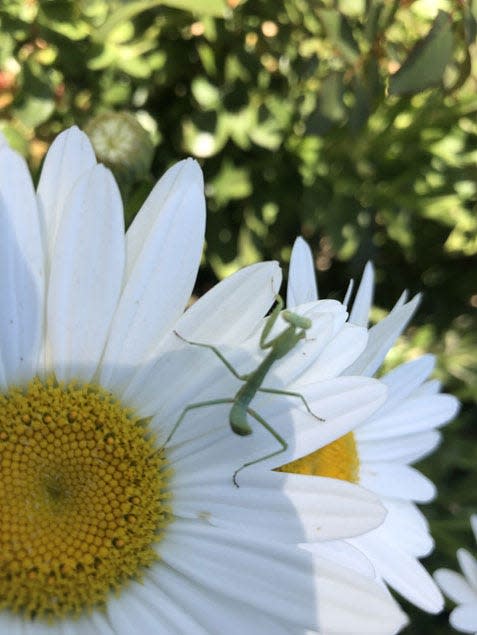How to protect beneficial insects in your yard and garden

Many hoped that one silver lining from the winter storm last year would be less insect pests, but unfortunately many seemed worse than ever – grasshoppers, caterpillars and aphids had particularly large populations last year. Temperature doesn’t have as much of an impact on insects as water does, or the lack of it. But while many homeowners focus on controlling pests in their yard and garden, it’s important to remember to protect the beneficial insects – they are crucial to maintaining a healthy landscape and productive garden.
There are several categories of beneficial insects – pollinators, predators, and parasitoids. Pollinators help provide many delicious crops like watermelon, squash and peaches. Since bee populations have shown concerning declines in recent years we should consider them when planning and managing the home garden and landscape. The easiest way to protect local bees is to be careful with pesticide application. Pollinators like bees and butterflies are sensitive to insecticides, and overuse can reduce their numbers. Only use pesticides when needed, and then be sure to use the correct product and follow the label directions. Try to use the most targeted product possible, instead of broad-spectrum and only apply to the plant in question. Chemical pesticides can be helpful if used properly and moderately, but overuse can lead to worse pest populations because of the effect on beneficial predators and parasitoids.
Predators are insects that kill and consume other insects. Some are specialized like ladybugs and green lacewings, they are particularly fond of aphids. Others have more broad taste, like preying mantis – they will eat whatever they can catch. Parasitoids are parasitic insects that lay eggs on a host and kill it as they develop. Together, these beneficial insects do a lot to keep pests insect populations down in the yard and garden.
Another way to help bees and butterflies is to plant pollinator-friendly plants. Some great choices for the Concho Valley include catmint, Gregg’s mistflower, lantana, bee balm, blackfoot daisy, esperanza, African blue basil, blackeyed susan, bulbine, globe mallow, salvia, zinnia, and turk’s cap.
Insects are often seen as unwelcome guests to the garden, and while some can be very damaging remember that there are many that we need – it is a fine balance. When insects are found in the landscape, correct identification is important before attempting to control them. For help in identifying, feel free to contact the Extension Office with a photo or a sample.
Allison Watkins is the Texas A&M AgriLife Extension Agent for horticulture in Tom Green County. Contact her at aewatkins@ag.tamu.edu.
This article originally appeared on San Angelo Standard-Times: How to protect beneficial insects in your yard and garden
